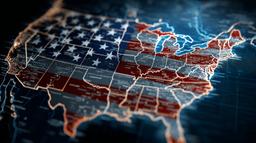İlgili Yayın Dosyaları

Number of major export sectors and major export destinations increased from 11 to 18 and from 15 to 29, respectively, in the last decade.
ANKARA- TEPAV stated that sector and market diversification of Turkey's exports increased and said: "This is of key importance in ensuring a stable export performance by reducing the impact of the shocks in external demand."
Policy note titled "Turkey's Export Performance 2: Diversification, Competitiveness and Adaptation at Sector Level" by Assoc. Prof. Dr. Ümit Özlale, Director of TEPAV Training and Research Institute for Public Policy, and H. Ekrem Cunedioğlu, TEPAV Research Associate was published. The note underlined that the share of the top 10 export sectors in total exports enjoyed an increased in product diversification and added: "The share of top 10 exporter sectors in 66 sectors increased from 73.8% in 1996 to 65.6% in 2010." Maintaining that another indicator to examine the changes in sectoral diversification was the number of equivalent sectors, the note continued:
"The number of equivalent sectors excludes the sectors with small contribution to exports and gives the number of the sectors that makes an equivalent contribution to total exports. In this context, the number of equivalent sectors increased from 11 in 2000 to 18 in 2009.
Both methods indicate that Turkey's exports went through sectoral diversification. Sectoral diversification, which is a proper strategy to reduce the vulnerability of export performance, must be analyzed also with respect to the technology intensity of the export basket. Figure 3 points to the positive correlation between sectoral diversification and technology intensity of exports implying that the former comes along with a higher technologic intensity. This is also contributed by the diminishing share of labor-intensive sectors that used to have a considerable share in exports due to the losses in competitiveness.
Moreover, it is remarkable that the number of equivalent sectors in exports that decreased during the 2001 crisis increased after the 2008 crisis."
TEPAV's evaluation stressed that sectoral diversification was accompanied by market diversification. Emphasizing that among 206 countries Turkey exports to, the number of countries with equivalent importance increased from 14 in 2000 to 29 in 2009, the note stated: "In brief, Turkey has evidently ensured a favorable diversification at both sector and market level."
Sectoral Competitiveness
The study calculated the competitiveness and adaptation capacity of these 6 sectors for the last decade. According to this, severe drops in competitiveness were faced particularly in the ready-made clothing and fruits-vegetables sectors. The losses witnessed in these two sectors stood highly above the country average. Competitiveness losses in iron-steel and motor vehicles sectors which are important export sectors for Turkey stood at relatively low levels. Over the examined period, competitiveness performance of the textiles sector did not change considerably while electrical machinery sector came to the fore with improvements in competitiveness.
In the period of global crisis, a striking improvement in the exports of fruits and vegetables and a slight drop in the competitiveness of the textiles sector were observed. In this period, other sectors did not go through a considerable change in competitiveness performance.
Sectoral Adaptation
The note also identified the adaptation figures representing the ability to adapt to new and emerging markets for the top 6 export sectors. One striking point was that in the crisis period, all but ready-made clothing sector improved the ability to adapt to new markets. High adaptation was remarkable particularly for the textiles and electrical machinery sectors. Motor vehicles appeared as a sector with relatively weak ability to head towards new markets especially in the 2005-2009 period. The study stressed that the structure of the sector and Turkey's position in the global supply chain could be the underlying reasons for weak adaptation capacity. The most important factors for high adaptation of the iron-steel sector were the dynamism of the construction sector in Turkey's surrounding region and Turkey's advantageous position for exports stemming from high logistic costs, as the study maintained. In the 2005-2009 period, parallel with the loss of competition, fruits-vegetables sector deteriorated in terms of adaptation to new markets.
TEPAV's study on the competitiveness and adaptation performance of the top 6 export sectors concluded: "Even though it is of importance to increase exports in new markets, it is an important matter of debate whether exporters can ensure long-term success in the new markets without improving competitiveness."




